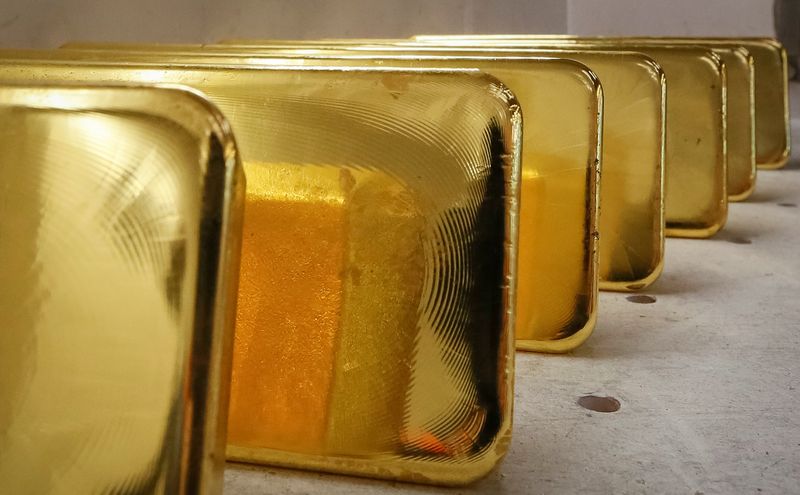Investing.com– Gold prices fell in Asian trade on Friday as positive U.S. labor data sparked a recovery in risk appetite and sapped some safe haven demand, putting the yellow metalon course for some weekly losses.
Among industrial metals, copper prices also benefited from improved risk appetite, while positive inflation data from top importer China boosted sentiment. But the red metal was nursing steep losses for the week.
fell 0.4% to $2,419.23 an ounce, while expiring in December fell 0.2% to $2,459.10 an ounce by 01:40 ET (05:40 GMT).
Gold heads for mild weekly losses, stays close to record highs
Spot prices were down nearly 1% this week, coming off near record-high levels hit last week as fears of a recession ramped up safe haven demand for the yellow metal.
But these fears eased through the week, especially as some strong readings on the labor market suggested that a drastic slowdown may not be on the cards.
Weekly data read better than expected on Thursday.
The reading sparked a sharp rebound in risk-driven markets, particularly stocks, and pressured some safe haven demand for gold.
But losses in the yellow metal were limited, as investors largely maintained bets that the Federal Reserve will cut interest rates in September. Lower rates reduce the opportunity cost of investing in gold.
This notion buoyed other precious metals, although they did fall on Friday and were also headed for weekly losses. fell 0.1% to $941.20 an ounce, while fell 0.3% to $27.535 an ounce.
Copper prices rise on positive China inflation, but weekly losses on tap
Benchmark on the London Metal Exchange rose 0.8% to $8,896.50 a ton, while one-month rose 0.8% to $4.0150 a pound.
Both contracts were down about 2% each this week, and were trading close to four-month lows.
Some positive data from top importer China spurred some gains in copper. inflation data for July grew more than expected, while inflation shrank less than expected.
The data helped spark some bets that demand was improving in China.
But other readings earlier this week, especially import data, showed the country’s copper imports shrank for a second straight month in July.
Read the full article here











